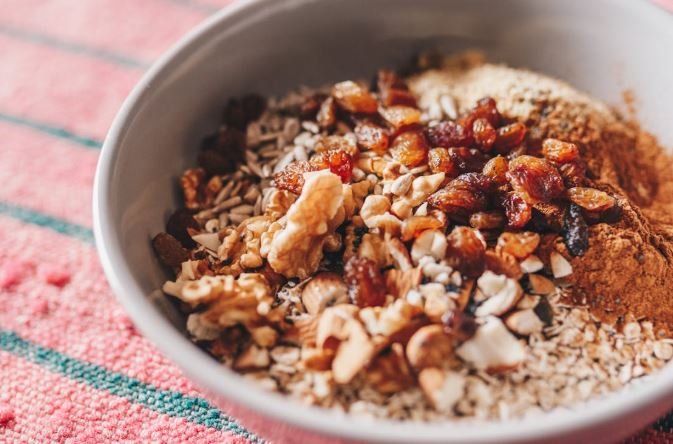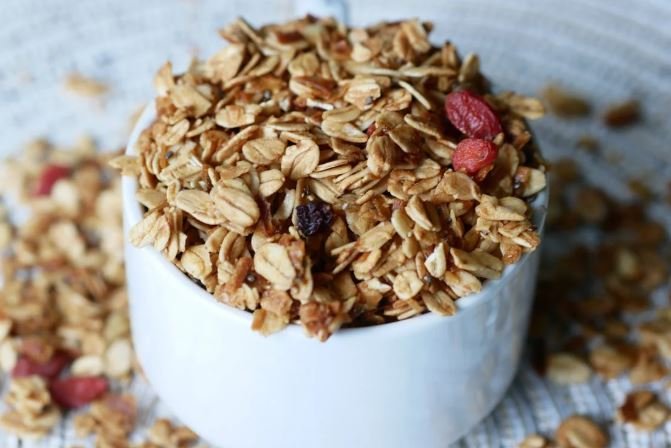Overnight oats have become a popular breakfast choice for many, thanks to their simplicity, versatility, and ability to provide a quick and nutritious start to the day. However, despite their growing popularity, how to make overnight oats for breakfast and why most people get it wrong is something that often goes unnoticed. While it may seem like a foolproof meal prep option, there are a few common mistakes people make that can prevent overnight oats from being the delicious and healthy breakfast they are meant to be. In this article, we’ll guide you on how to make overnight oats for breakfast the right way and highlight the errors to avoid to ensure you’re getting the most from this nutritious meal.

What Are Overnight Oats?
Overnight oats are a no-cook breakfast option where rolled oats are soaked in liquid (like milk or yogurt) overnight, allowing them to soften and absorb the liquid. By morning, you’ll have a creamy, ready-to-eat breakfast that’s both satisfying and nutrient-packed. You can customize your overnight oats with various toppings and flavorings, such as fruits, nuts, seeds, or spices, to create a balanced and delicious meal.
Now, let’s dive into how to make overnight oats for breakfast and why most people get it wrong, so you can perfect your preparation and avoid common mistakes.
The Right Way to Make Overnight Oats for Breakfast
The process of making overnight oats is simple, but there are some key steps to follow to ensure you’re getting the right texture and flavor. Here’s the step-by-step guide to how to make overnight oats for breakfast the right way:
1. Use the Right Oats
Not all oats are created equal, and when making overnight oats, it’s crucial to use rolled oats or old-fashioned oats. These oats have a larger texture and are more absorbent, making them ideal for soaking overnight. Instant oats or quick oats, on the other hand, tend to become mushy and may not absorb the liquid properly, leading to a less-than-ideal texture.
- Tip: Stick with rolled oats to ensure a creamy, but not overly soft, consistency in the morning.
2. Choose the Right Liquid
The liquid you choose is just as important as the oats themselves. Most people get it wrong by using the wrong ratio of liquid to oats, or by choosing the wrong liquid altogether. Typically, a ratio of 1:1 (1 part oats to 1 part liquid) works best, but you can adjust it depending on how thick or runny you want the oats to be. You can use a variety of liquids, including milk (dairy or plant-based), yogurt, or even fruit juice, to suit your taste and dietary needs.
- Tip: For a creamier texture, try using Greek yogurt along with almond milk. This combination provides a balance of protein and healthy fats.
3. Add Flavorings and Sweeteners
One common mistake people make when learning how to make overnight oats for breakfast is neglecting to add flavorings or sweeteners. Oats by themselves can be bland, so adding ingredients like honey, maple syrup, vanilla extract, cinnamon, or nutmeg can make a big difference in taste. Don’t forget to balance the sweetness, as you don’t want the oats to become overly sugary.
- Tip: Add a drizzle of honey or maple syrup and a pinch of cinnamon to enhance the flavor without overloading on sugar.
4. Incorporate Nutrient-Dense Add-Ins
To make your overnight oats more filling and nutritious, add ingredients like chia seeds, flaxseeds, nuts, or fruits. These additions provide fiber, protein, and healthy fats, which not only improve the flavor but also help keep you full for longer. How to make overnight oats for breakfast becomes even more enjoyable when you add a variety of textures and nutrients.
- Tip: Try adding chia seeds for a fiber boost or berries for antioxidants and vitamins. You can also top your oats with nuts like almonds or walnuts for crunch and healthy fats.

5. Let It Soak Long Enough
One of the most common mistakes when preparing overnight oats is not letting them soak long enough. While some people may think that a few hours is enough, overnight soaking is the best way to allow the oats to fully absorb the liquid and soften. Ideally, you should let the oats sit in the fridge for at least 6 hours, but leaving them overnight ensures the best texture and flavor.
- Tip: Prepare your oats before bed and let them soak in the fridge overnight. This will ensure the oats are soft and creamy by morning.
6. Consider the Toppings
The toppings you choose for your oats can make or break the dish. Some people get it wrong by loading their oats with too many sweet or sugary toppings, which can defeat the purpose of having a healthy breakfast. To make your oats truly nutritious, opt for fresh fruits, nuts, seeds, or even a dollop of nut butter.
- Tip: Top your oats with fresh fruits like bananas, berries, or apples, along with some seeds or nuts for extra crunch and nutrition.
Why Most People Get It Wrong
While making overnight oats sounds easy, many people make the following mistakes that can affect the final outcome:
1. Using Too Much Liquid
A common mistake when learning how to make overnight oats for breakfast is using too much liquid. This results in a soupy consistency that is not enjoyable. Remember, oats will absorb the liquid as they soak, so don’t overdo it.
- Mistake to Avoid: Stick to a 1:1 ratio of oats to liquid, and adjust based on your desired consistency.
2. Not Allowing Enough Soaking Time
As mentioned earlier, one of the key steps in how to make overnight oats for breakfast is letting them soak long enough. If you don’t give the oats enough time to absorb the liquid, they can remain hard or chewy, which makes them unpleasant to eat.
- Mistake to Avoid: Let the oats soak overnight or for at least 6 hours to ensure they soften properly.
3. Skipping the Flavorings
Some people think that just adding oats and liquid is enough, but without flavorings like vanilla, cinnamon, or sweeteners, your oats may turn out bland and unappetizing.
- Mistake to Avoid: Be sure to add some flavorings and spices to enhance the taste.
4. Ignoring Nutrient-Dense Add-Ins
One mistake that can impact the nutritional value of your overnight oats is neglecting to add nutrient-dense ingredients like seeds, nuts, and fruit. These ingredients not only boost the flavor but also increase the fiber, protein, and healthy fat content, helping you feel fuller for longer.
- Mistake to Avoid: Always add at least one or two nutrient-dense toppings to your oats for added health benefits.

In addition to exploring different nutrient-rich options, best yogurt breakfast bowls for fitness can be a great way to kickstart your day with the right balance of protein, fiber, and healthy fats. If you’re looking for more ideas on how to build the perfect yogurt bowl that supports your fitness goals, check out our guide on Best Yogurt Breakfast Bowls for Fitness. This article dives deeper into the top yogurt bowls, offering delicious and healthy recipes that can help fuel your workouts and recovery, all while satisfying your taste buds.
Conclusion
How to make overnight oats for breakfast can seem simple, but it’s easy to get it wrong if you’re not mindful of the details. By using the right oats, liquid, and flavorings, allowing enough soaking time, and adding nutrient-rich toppings, you can ensure a delicious and satisfying breakfast that fuels your day. Avoid the common mistakes people make, and you’ll be able to enjoy a perfect bowl of overnight oats every time, whether you’re on the go or taking a moment to relax before your busy day.


